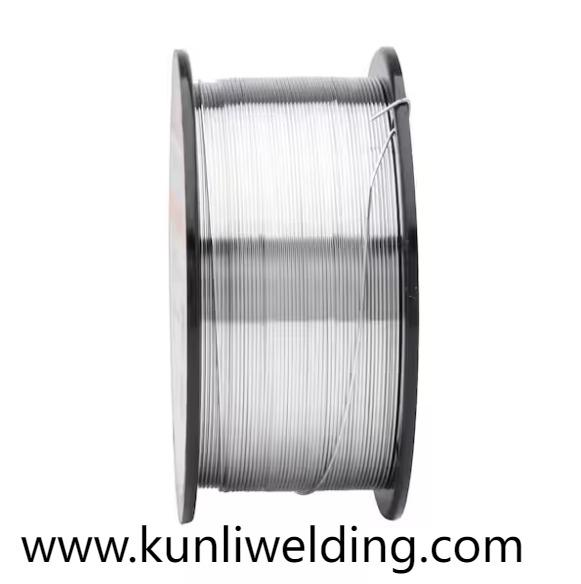Can Kunliwelding's 4043 wire help reduce spatter in aluminum welds

When it comes to choosing the right aluminum TIG wire, buyers must navigate the differences between various grades to select the best option for their welding needs. Aluminum TIG Wire Suppliers offer a range of alloys, each with unique properties that cater to different applications. Understanding the key differences between these grades is essential for achieving optimal weld quality and performance.
One of the most common aluminum TIG wire grades is 4043, which is often chosen for its versatility and ease of use in welding aluminum alloys like 6061 and 5052. This wire contains a small amount of silicon, which helps lower the melting point, making it ideal for thin-walled materials and for applications where high fluidity is needed. It also produces clean welds with minimal spatter, making it a popular choice for aesthetic welds. However, 4043 is not as strong or resistant to corrosion as some other alloys, so it may not be suitable for heavy-duty or marine applications.
On the other hand, 5356 is a magnesium-based alloy that offers higher strength and better corrosion resistance, making it ideal for welding more demanding aluminum alloys, such as 5083 or 5456. This alloy is typically used in structural applications, especially those in marine or offshore environments, where its excellent resistance to saltwater corrosion is critical. While 5356 requires more heat input to weld and may produce more spatter than 4043, its superior mechanical properties make it essential for high-strength and high-performance applications.
For applications requiring even higher strength and better wear resistance, 2319 and 7075 are two other notable aluminum TIG wire grades. 2319 is often used in aerospace applications, where its high strength and low expansion rate are vital for parts exposed to extreme conditions. 7075, while more difficult to weld due to its higher strength, is used in structural aerospace applications where both strength and corrosion resistance are crucial.
When selecting an aluminum TIG wire, it is important to consider the alloy composition, weldability, and corrosion resistance of the wire. Each grade has its own set of advantages and limitations, so matching the right wire to the material being welded and the service conditions is essential for achieving high-quality welds and minimizing the risk of weld defects.
Moreover, the weldability of aluminum TIG wire varies across different grades. Wires with higher silicon content, like 4043, are generally easier to weld, particularly on thinner sections of aluminum. Conversely, alloys like 5356 or 2319, with higher magnesium or copper content, offer better mechanical properties but may require more careful control of heat input and welding technique.
One of the key challenges in aluminum welding is managing the potential for porosity and cracking, especially when working with alloys prone to these defects. Choosing the right wire can help mitigate these risks. For example, 5356 is often chosen for its strength and resistance to cracking, especially in more critical structural applications, while 4043 is often used in less demanding environments where ease of welding and appearance are prioritized.
For fabricators looking for consistency and quality, working with reputable Aluminum TIG Wire Suppliers is essential. A reliable supplier ensures that the wire's properties, such as diameter and coating, are consistent across every spool, which is crucial for maintaining uniform welds during production. Additionally, suppliers that offer comprehensive support and guidance help buyers select the most appropriate wire for their specific needs, reducing the trial-and-error approach that often comes with new materials.
As aluminum welding technology advances, new alloy compositions are emerging, offering even more specialized solutions for different applications. For example, some newer wires are designed to enhance heat resistance and durability for use in high-heat environments, such as engine parts and exhaust systems. Keeping up with these developments allows fabricators to stay ahead of the curve and choose the most advanced solutions available.
By understanding the key differences between aluminum TIG wire grades and selecting the right wire for each application, fabricators can achieve stronger, cleaner, and more reliable welds. Whether welding thin materials or heavy-duty structures, understanding the alloy's properties and selecting the correct wire can make all the difference in achieving high-quality results.
For a closer look at various aluminum welding wire options, including ER5183, which offers excellent strength and corrosion resistance for critical applications, visit www.kunliwelding.com . The site provides detailed product descriptions, handling notes, and technical support to ensure that fabricators make informed choices for their welding needs.






